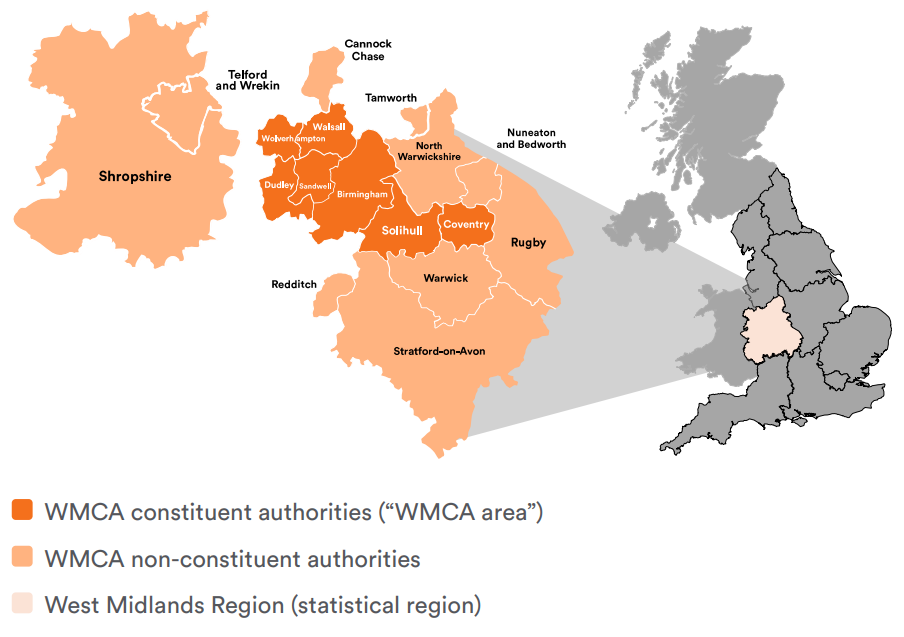About the Region
The West Midlands, located in the heart of England, is a vibrant metropolitan area known for a proud industrial heritage, diversity, and modern innovation. It sits at the geographical centre and is one of the most urbanised areas of the country. It has a pivotal role in the nation’s economy and culture, while still offering green spaces and areas of natural beauty. Covering around 350 square miles, the West Midlands includes several key cities and towns. The largest is Birmingham, the UK’s second-largest city and a major hub for business, education, and the arts. Alongside Birmingham are the cities of Coventry, Wolverhampton, and the boroughs of Dudley, Sandwell, Solihull, and Walsall, each with its own unique character and history.
Geographically, it is a mix of urban landscapes and green, open spaces. While the city centres are bustling with commerce and activity, areas like Sutton Park in Birmingham, one of the largest urban parks in Europe, offer a peaceful retreat from city life. The region is also traversed by a network of canals, a legacy of its industrial past, which today provide picturesque walking routes and leisure opportunities. The county is known for its incredible diversity, both culturally and economically. Birmingham, in particular, is one of the most ethnically diverse cities in the UK, with over 40% of its population coming from ethnic minority backgrounds. This diversity is reflected in the vibrant mix of food, festivals, and cultural experiences available throughout the county, from the famous Balti Triangle in Birmingham to Coventry’s celebration of global cultures.
Historically, the West Midlands was at the heart of the Industrial Revolution. Birmingham earned the nickname “the workshop of the world,” producing goods that were exported across the globe. The Black Country, comprising towns like Dudley, Wolverhampton, and Walsall, was named for the coal and iron industries dominating the region. Today, while traditional heavy industries have declined, the West Midlands remains a powerhouse of manufacturing, particularly in the automotive sector, with companies like Jaguar Land Rover continuing to lead the way in innovation. Coventry, one of the West Midlands County’s key cities, holds a unique place in British history. After being heavily bombed during World War II, Coventry rose from the ashes to become a symbol of peace and reconciliation. In 2021, it was named the UK City of Culture, highlighting its continued cultural significance.
Today, the West Midlands is a region in the midst of transformation. Major infrastructure projects, such as HS2, are set to further boost connectivity, while Birmingham’s hosting of the 2022 Commonwealth Games brought global attention to the area. With a rich industrial heritage, a thriving multicultural population, and a bright future, the West Midlands is a dynamic and exciting place to live, work, and visit.


The West Midlands Combined Authority
The West Midlands Combined Authority (WMCA) was set up in 2016 with the vision to make the West Midlands a happy, healthy, place to live. The objectives to achieve this vision are:
- making it easier and safer to travel in and around the region;
- using derelict land to build homes;
- protecting green spaces;
- making sure young people have the education and employment opportunities to make a great start in life;
- working together to support communities and build a fairer, healthier and more inclusive West Midlands;
- tackling climate change through a WM2041 pledge.